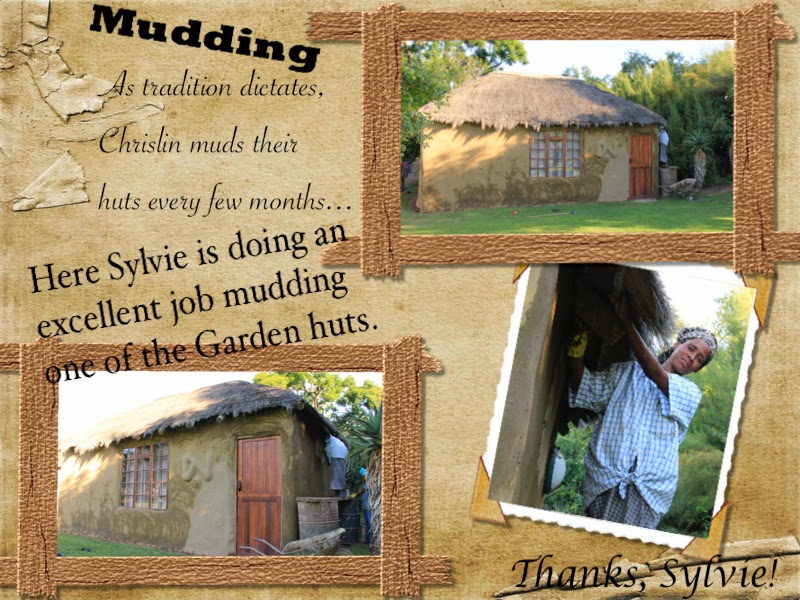Back in the old African day, houses were made such that they could provide a cooling effect during the hot weather and warmth during the cold, rainy season. Most of the huts were cone-like in shape and were made from mud, bricks, dung, grass or stone depending on the area and thatched with grass. Today, mud huts vary in shape and size, design and purpose. They are still, however,environmentally friendly as well as comfortable.
Chrislin African Lodge embraced these ideas and built their first traditional African mud hut in 1999. They have continued building mud huts to now boast 12 scattered around the farm.
Chris and David Pickels built their African mud huts out of mud, cow dung, sticks of twigs and dried grass. Twigs and pieces of wood were first tied together and reinforced by mud. The mud is left to dry for a few days before using grass to make the roof. They literally got stuck in the mud! Keeping up appearances is no mean feit as all 12 huts need to be 'mudded' every few months. Below you can see Sylvie, Chrislin's 'mudder', mudding one of the Garden huts. Her daughter assists her and together they apply layer upon layer, in neat movements.
I stumbled upon this website, which is a lovely short description, with pictures, of re-mudding your hut.
http://mykenyaexperience.wordpress.com/2014/04/30/how-to-re-mud-your-mud-hut-10kg-of-cow-dung-required/

Mudding and tapping are two essential steps in the process of drywall installation and finishing. Mudding involves applying joint compound, also known as mud, over the joints between drywall panels to create a smooth surface. This process requires skill and precision to ensure seamless transitions between panels. Tapping, on the other hand, involves embedding drywall tape into the wet mud to reinforce the joints and prevent cracks. It's a meticulous task that requires attention to detail to ensure proper adhesion and a professional finish. Together, mudding and tapping play a crucial role in achieving flawless walls and ceilings in both residential and commercial construction projects.
ReplyDeleteMudding
Tapping